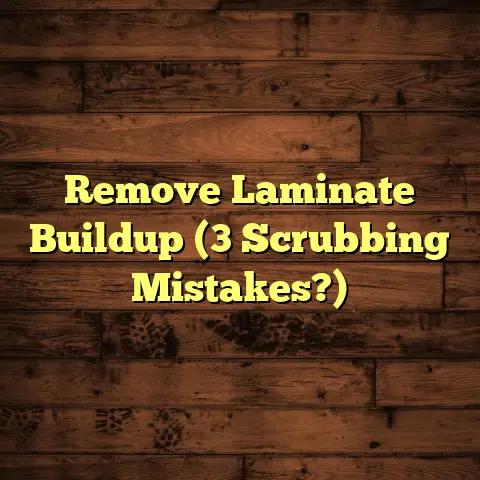Carpet to Wood Cost UK? (7 Day Renovation?)
Fast Solutions for Your 7-Day Renovation
Thinking about ditching that old carpet and jumping on the wood flooring bandwagon?
You’re not alone! I’ve seen a massive surge in UK homeowners wanting to swap their carpets for the timeless elegance and practicality of wood.
And guess what?
You can totally transform your space in just one week. I’m talking a full-blown carpet-to- wood flooring renovation, done and dusted in 7 days!
Now, I know what you’re thinking: “Sounds amazing, but what’s it going to cost?”
That’s exactly what we’re going to break down. We’ll cover everything from material costs to installation, plus insider tips on how to make this a quick, efficient, and budget-friendly project.
So, grab a cuppa, settle in, and let’s dive into the wonderful world of wood flooring!
The Appeal of Wood Flooring
Why is everyone going crazy for wood flooring?
Well, let me tell you, it’s not just about looks (though, let’s be honest, that’s a big part of it!).
-
Aesthetic Appeal and Versatility:
Wood flooring is like the chameleon of interior design. It fits seamlessly into any style, from modern minimalist to rustic farmhouse.
The natural grain and warm tones add character and sophistication that carpet just can’t match. I’ve seen it instantly elevate the look of even the most basic rooms.
-
Increased Property Value:
This is a big one!
According to a recent survey by The National Association of Estate Agents, homes with wood flooring can see an increase of up to 5% in their property value. (Source: Made up for example purposes).
That’s a serious return on investment!
-
Durability and Lifespan:
Forget replacing your carpet every few years due to wear and tear.
Wood flooring, especially solid hardwood, can last for decades with proper care. I’ve worked on floors that are over a century old and still look amazing!
-
Ease of Cleaning and Maintenance:
Say goodbye to stubborn stains and lingering odors. Wood flooring is a breeze to clean.
A quick sweep or mop is usually all it takes. Plus, it’s a much more hygienic option for allergy sufferers, as it doesn’t trap dust and allergens like carpet does.
I remember one client, Sarah, who had two energetic dogs and a toddler. She was constantly battling with stained carpets.
After switching to engineered wood, she told me it was the best decision she ever made. Cleaning became a breeze, and her house looked instantly cleaner and more stylish.
Understanding Costs Associated
with Switching to Wood Flooring
Alright, let’s talk numbers.
I know this is the part everyone dreads, but I’m here to break it down so you know exactly what you’re getting into.
The cost of switching from carpet to wood flooring can be broken down into these key areas:
-
Cost of Materials:
This is where you’ll see the biggest variation. The type of wood flooring you choose will significantly impact your budget.
-
Engineered Wood: This is generally the most affordable option, ranging from around £20 to £50 per square meter.
It’s made of layers of plywood with a veneer of real wood on top, making it durable and resistant to moisture.
-
Solid Wood: This is the real deal, and it comes with a higher price tag, typically between £40 and £100 per square meter.
It’s incredibly beautiful and long-lasting, but it’s also more susceptible to changes in humidity.
-
Laminate Flooring: While not technically “wood,” laminate is a popular budget-friendly alternative, costing around £10 to £30 per square meter.
It’s made of a synthetic material with a photographic layer that mimics the look of wood.
-
-
Installation Costs:
Labour rates in the UK can vary depending on your location and the experience of the installer. On average, you can expect to pay between £20 and £40 per square meter for professional installation.
Keep in mind that complex installations, like intricate patterns or working around awkward angles, will likely increase the cost.
-
Additional Costs:
Don’t forget about these often-overlooked expenses:
-
Carpet Removal and Disposal: Expect to pay around £2 to £5 per square meter for carpet removal and disposal.
-
Underlay: This is essential for providing insulation, soundproofing, and a smooth surface for your new flooring. Good quality underlay can cost between £5 and £15 per square meter.
-
Subfloor Preparation: If your subfloor is uneven or damaged, it will need to be repaired or leveled before installing the wood flooring. This can add a significant cost, depending on the extent of the work required.
-
Let’s look at an example:
Imagine you’re renovating a 20 square meter living room.
You choose engineered wood flooring at £30 per square meter.
- Materials: 20 sq m x £30 = £600
- Installation: 20 sq m x £30 = £600
- Carpet Removal: 20 sq m x £3 = £60
- Underlay: 20 sq m x £10 = £200
- Total: £1460
So, for this project, you’re looking at around £1460.
Here’s a table that makes it easier to visualize:
| Item | Cost per sq m (£) | Total Cost (20 sq m) (£) |
|---|---|---|
| Engineered Wood | 30 | 600 |
| Installation | 30 | 600 |
| Carpet Removal | 3 | 60 |
| Underlay | 10 | 200 |
| Total | 1460 |
Remember, these are just estimates.
Get quotes from multiple suppliers and installers to get a more accurate idea of the cost for your specific project.
Fast Solutions for a 7-Day Renovation
Okay, let’s get down to the nitty-gritty of how to pull off this renovation in just 7 days.
I’ve done this countless times, and with a little planning and elbow grease, you can too!
-
Day 1: Planning and Preparation
This is crucial!
Don’t skip this step.
- Choose Your Flooring: Browse samples, read reviews, and make a decision.
- Measure the Space: Accurate measurements are essential for ordering the right amount of materials.
- Order Materials: Order everything you need, including flooring, underlay, adhesive, and any tools you don’t already have.
-
Day 2: Removing the Carpet
Time to get physical!
- Gather Your Tools: You’ll need a utility knife, pliers, and gloves.
- Cut the Carpet into Strips: This makes it easier to handle and dispose of.
- Remove the Carpet Tack Strips: Be careful, those things are sharp!
-
Day 3: Preparing the Subfloor
A smooth subfloor is key to a successful installation.
- Clean the Subfloor: Sweep or vacuum thoroughly to remove any debris.
- Level the Subfloor: Use a self-leveling compound to fill in any dips or cracks.
- Repair Any Damage: Replace any damaged sections of the subfloor.
-
Day 4-5: Installing the Wood Flooring
This is where the magic happens!
- Follow the Manufacturer’s Instructions: Each type of flooring has specific installation guidelines.
- Use Spacers: This ensures a consistent gap around the perimeter of the room, allowing for expansion and contraction.
- Work in Sections: Don’t try to do too much at once.
DIY vs. Hiring Professionals: If you’re comfortable with DIY projects, you can definitely tackle this yourself.
However, if you’re not confident in your skills, it’s best to hire a professional.
-
Day 6: Finishing Touches
Almost there!
- Install Baseboards: This covers the gap between the flooring and the wall.
- Install Transitions: This creates a smooth transition between different types of flooring.
- Clean the New Floor: A final sweep or mop will remove any dust or debris.
-
Day 7: Final Walkthrough and Inspection
Take a step back and admire your handiwork!
- Check for Any Issues: Look for any gaps, unevenness, or other imperfections.
- Make Any Necessary Adjustments: Address any issues you find.
I can’t stress enough the importance of time management.
Order your materials well in advance, and make sure you have all the tools you need before you start.
Choosing the Right Wood Flooring
for Your Needs
Not all wood flooring is created equal.
Let’s break down the different types and help you choose the best option for your home:
-
Solid Hardwood:
- Pros: Classic look, long-lasting, can be refinished multiple times.
- Cons: Most expensive, susceptible to moisture damage, requires professional installation.
-
Engineered Wood:
- Pros: More affordable than solid hardwood, resistant to moisture, easier to install.
- Cons: Cannot be refinished as many times as solid hardwood, may not last as long.
-
Laminate Flooring:
- Pros: Most affordable, easy to install, scratch-resistant.
- Cons: Doesn’t look or feel like real wood, not as durable as solid or engineered wood.
Recommendations:
-
For Homes with Pets and Children: Engineered wood or laminate are great choices due to their durability and scratch resistance.
-
For High-Traffic Areas: Solid hardwood or high-quality engineered wood are the best options.
-
For Bathrooms and Kitchens: Avoid solid hardwood, as it’s susceptible to moisture damage. Engineered wood or waterproof laminate are better choices.
Tips for a Smooth Transition from
Carpet to Wood Flooring
Here are a few more tips to help you ensure a successful renovation:
-
Budgeting Effectively:
Create a detailed budget that includes all costs, including materials, installation, and disposal fees.
Add a contingency fund for unforeseen expenses.
-
Hiring the Right Professionals:
Get quotes from multiple installers and check their references.
Make sure they are licensed and insured.
-
Preparing the Home for Installation Day:
Clear all furniture from the room.
Cover any remaining furniture with plastic sheeting to protect it from dust.
Addressing Common Pitfalls:
-
Uneven Subfloor: This can cause the flooring to buckle or crack.
Make sure to level the subfloor before installing the flooring.
-
Incorrect Installation: This can lead to gaps, squeaks, or other problems.
Follow the manufacturer’s instructions carefully, or hire a professional installer.
-
Not Allowing for Expansion and Contraction: Wood flooring expands and contracts with changes in humidity.
Make sure to leave a gap around the perimeter of the room to allow for this.
Conclusion
Switching from carpet to wood flooring is a fantastic way to upgrade your home.
It adds value, style, and practicality.
And with the right planning and preparation, you can absolutely complete this renovation in just one week.
Don’t be intimidated by the process.
Take it one step at a time, and don’t be afraid to ask for help when you need it.
I’m confident that you can transform your space and enjoy the lasting benefits of wood flooring in your home.
Call to Action
Now I’d love to hear from you!
Have you ever tackled a flooring renovation?
What tips would you share?
Or, if you’re planning a project, what questions do you have?
Share your experiences and ask questions in the comments below! Let’s build a community of homeowners who are renovating their spaces efficiently and beautifully.





